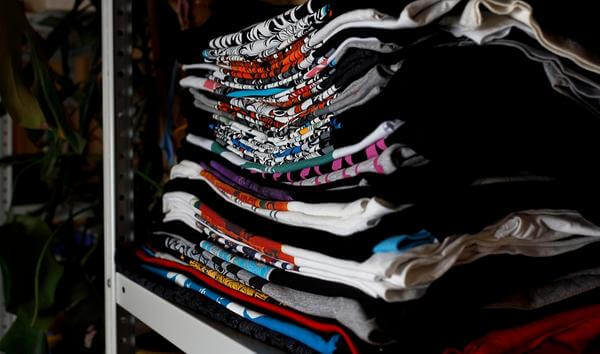PRINT FRIENDLY ARTWORK
 Not all art translates to screen printing but the more you know about the process, the better you will be at creating print friendly art. Below outlines a few tips to help you improve your apparel artistry skills and decorating processes that will aid in helping you become more successful at achieving maximum quality and efficiency in screen printing.
Not all art translates to screen printing but the more you know about the process, the better you will be at creating print friendly art. Below outlines a few tips to help you improve your apparel artistry skills and decorating processes that will aid in helping you become more successful at achieving maximum quality and efficiency in screen printing.I have been designing art and screen printing for over thirty years and know that it takes more than just being a great artist to be successful in apparel decorating. You must have a full understanding of the printing process as well -- knowledge of the entire process from fabrics, to separations, to screens, to inks and even how the job is set up. Just creating something and passing it off to the screen room could be a costly mistake. Separations, screens, inks, time involved in set up, could all be wasted if the art isn’t printable or doesn’t convey what the customer wants. With these tips you should be able to do some amazing things with your artwork and, also help improve your quality and efficiency in production.
BE IN THE KNOW
Educate yourself about screen printing. All artists should learn how each process works. Talk with your printers and listen to their suggestions on how to make improvements to the art to make it more print friendly. Don’t be afraid to get your hands dirty – help mix inks, clean screens and set up a job or two. Pull that squeegee or push? You will learn a lot and earn respect from your coworkers on the print floor, but most of all, you will learn how to make your art translate better for decorating.
KNOW YOUR SUBSTRATE
Don’t create art until you know your substrate. Having extensive knowledge of each type of substrate will provide a huge advantage when designing art and knowing how it will react when printed. Fabrics stretch, shrink, scorch, move and of course, the big one – they dye migrate. So before going Picasso, know your fabric limitations. There are numerous apparel fabrics. Some of the most popular are jersey, fleece, heathers, tri-blends, performance,100% cotton, 50/50 blend, 100% polyester, rayon, modal, some with softeners, wicking agents, etc. – and they all behave differently. Head spinning yet? Don’t be intimidated, with a little time and research you’ll be able to recognize how each fabric works and reacts, which will help you create your masterpiece and actually produce it for apparel. When you want the best look and feel for your next apparel masterpiece, always try to find a high stitch density garment with a high singles thread count to ensure maximum ink coverage and detail retention -- like the New Fruit of the Loom® ICONIC™ ring-spun t-shirt.
CREATING ART FOR APPAREL
Once you’ve educated yourself on the various steps of the process and how fabrics perform, it’s time to start getting creative, right? Wait, not so fast da Vinci, just a few more helpful things to know before you’re off to the races. Yes, there are some great graphic and photography programs out there that will allow you to do some amazing things with your art -- like really cool gradients and filter effects. Just don’t get too carried away, because remember, it still has to be printable.
A few basic things to know when creating art for apparel:
- Gradients, blends, and photographic images are continuous tone images on-screen. When you output these designs, you will have to choose what type of halftone you will use, size of the dot, shape, and angle. Be sure your screen room can hold the dot pattern. If not, it could result in moire’ patterns which distort your images, or dot gain is another problem where dots get larger which effects the color and tonal values during printing.
- Know the size of the stroke or the area of the shape. Depending on the color of the garment, the mesh (screen) you are using, or even the ink color can determine the stroke widths in a design. For example, when printing on a white shirt with no under base, you can create some very fine strokes. However, let’s say it’s a black shirt and the ink is bright orange, you will then need to under base that color, and using a super fine stroke may be very difficult or next to impossible to register, also choking this would be impossible as well. If you are using specialty inks like puffs or high-density inks, large areas of inks do not work well or require special attention.
- Avoid creating something that your printers aren’t familiar with or aren’t very efficient at doing. Remember, you’re not aiming for Squeegee Awards and creating art for yourself – this is a business and it needs to be profitable to keep running. So, stay within your parameters and know your limitations. Keep colors low if possible and if you want to try new things then experiment after production hours. Test inks and work with your printers to create new techniques. Then you can offer these new ideas to your customers as an added value for a price.